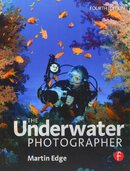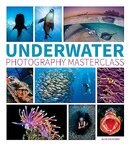KyleFS
New
To not "bury the lead", I'm looking for recommendations on my first strobe(s) used primarily for wider-angle shots. Do I blow the whole budget on 1 "great" strobe hoping to add a second later or 2 "good" strobes out of the gate, hoping to upgrade later?
Context:
I'm new to the world of underwater photography. I have worked in pro video on land and some hobby photography. I got a GoPro as an easier (and cheaper) entry to the task loading of adding a camera to a dive before taking my "nicer" cameras underwater. I have enjoyed it, but find myself just capturing crappy stills from my videos. So, I figured I should just commit to photography underwater. And if I know anything, it's that lighting makes all the difference, so focusing here.
I dive off the NC coast so mostly shipwrecks, sharks, and photos of fellow divers. I'm looking for recommendations on somewhat reasonably priced single or pair of strobes to go with my A6000 or a6300 with the 16-50mm in a Salted Line A6xxx housing.
Strobe budget is <$1,000. Based on research, wide angle shooting is going to need some power and eventually (or right away), 2 strobes, so I'm torn between 1 more expensive powerful strobe to start or 2 less expensive/powerful out of the gate. I started exploring this thread on "Big Bang Strobes", but fear the suggestions/specificity might be more expensive than I can afford for my first strobe(s), but can be convinced to invest once.
Options I've seen/considered:
Context:
I'm new to the world of underwater photography. I have worked in pro video on land and some hobby photography. I got a GoPro as an easier (and cheaper) entry to the task loading of adding a camera to a dive before taking my "nicer" cameras underwater. I have enjoyed it, but find myself just capturing crappy stills from my videos. So, I figured I should just commit to photography underwater. And if I know anything, it's that lighting makes all the difference, so focusing here.
I dive off the NC coast so mostly shipwrecks, sharks, and photos of fellow divers. I'm looking for recommendations on somewhat reasonably priced single or pair of strobes to go with my A6000 or a6300 with the 16-50mm in a Salted Line A6xxx housing.
Strobe budget is <$1,000. Based on research, wide angle shooting is going to need some power and eventually (or right away), 2 strobes, so I'm torn between 1 more expensive powerful strobe to start or 2 less expensive/powerful out of the gate. I started exploring this thread on "Big Bang Strobes", but fear the suggestions/specificity might be more expensive than I can afford for my first strobe(s), but can be convinced to invest once.
Options I've seen/considered:
- 1x Sea & Sea YS-D3 (seems to be a nice all-around, but top-end of the budget)
- 2x Inon S220 (More budget wide-angle, but probably underpowered?)
- Find used Inon Z330s or wait for whatever the replacement will be
- Save my pennies for a Retra or other?
- Scubalamp D-Pro (or is this too "specialized"?)






